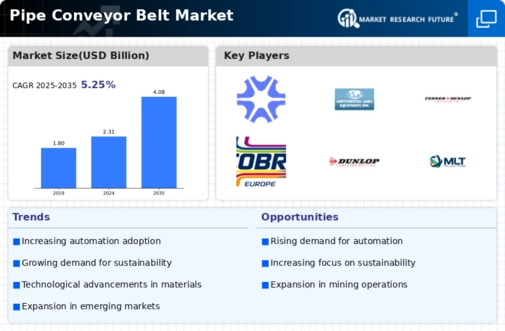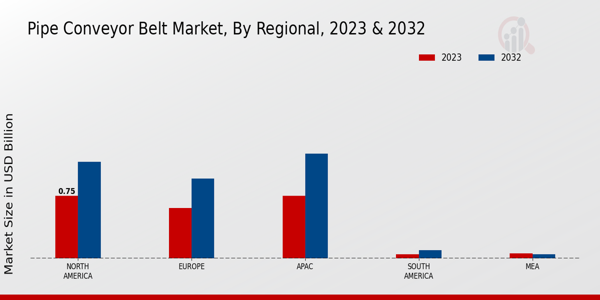The Pipe Conveyor Belt Market is characterized by intense competition driven by the increasing demand for efficient material handling solutions across various industries. As companies strive to optimize their operations, the importance of reliable and high-performance conveyor belts has grown significantly. This market is influenced by technological advancements, the need for automation, and the push toward sustainability in manufacturing and transportation processes. Key players in this market focus on product innovation, strategic partnerships, and expanding their geographical reach to enhance their competitive edge.
The continuous development of advanced materials and manufacturing techniques also plays a crucial role in shaping the market dynamics, while fluctuating raw material prices and environmental regulations remain significant challenges for companies operating in this field. Habasit AG stands out in the Pipe Conveyor Belt Market due to its strong emphasis on quality and reliability. The company has established a solid reputation for its innovative products, which are designed to ensure seamless performance in challenging operating conditions. With a robust global presence, Habasit AG leverages its extensive distribution network and technical support capabilities to serve a diverse client base.
Their commitment to research and development allows them to stay ahead of market trends and cater to specific customer needs. The company's focus on sustainable solutions and enhanced belt durability further strengthens its market position, enabling it to retain a competitive advantage over peers. Habasit AG’s ability to adapt to changing market demands while maintaining high standards of performance exemplifies its strategic strength in the pipe conveyor belt segment. Veyance Technologies is another significant player in the Pipe Conveyor Belt Market that brings a wealth of experience and expertise to the industry.
The company is recognized for its advanced belt designs and engineering capabilities, which provide effective solutions for various material handling applications. Veyance Technologies has successfully positioned itself as a trusted partner for organizations seeking optimized performance and reliability in their conveyor systems. With a focus on innovation, the company consistently invests in the development of new technologies that enhance the functionality and longevity of its products. Their extensive product range, coupled with a commitment to customer service and support, has allowed Veyance Technologies to establish a loyal customer base.
This, combined with strategic initiatives to expand its market reach, cements Veyance Technologies' status as a formidable competitor in the global pipe conveyor belt landscape.



















Leave a Comment